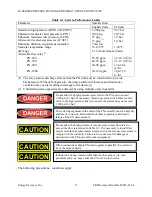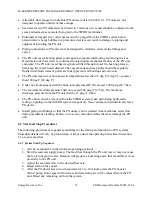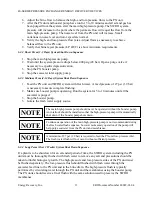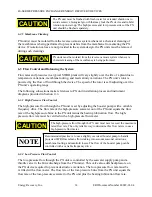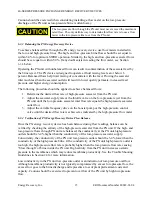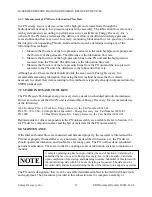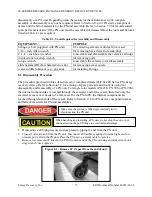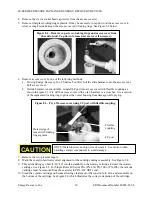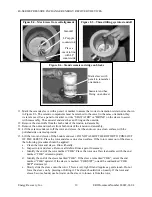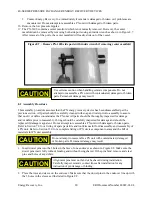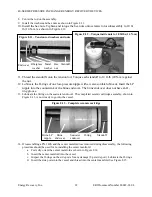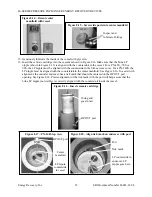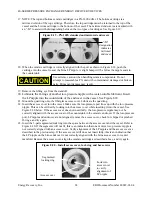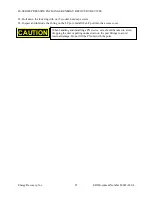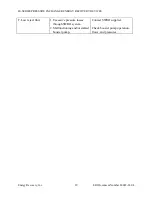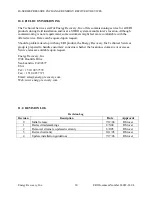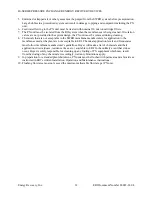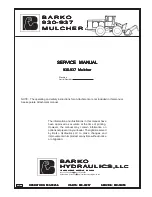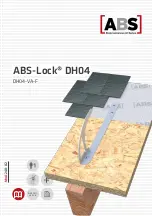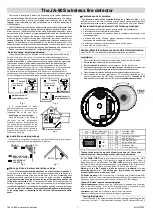
4S-SERIES PRESSURE EXCHANGER ENERGY RECOVERY DEVICES
Energy Recovery, Inc.
24
ERI Document Number 80022-01-04
17.
NOTE: The top and bottom ceramic cartridges in a PX-140S differ. The bottom cartridge is a
mirrored version of the top cartridge. Therefore, the top cartridge must be returned to the top of the
vessel and the bottom cartridge to the bottom of the vessel. The mirrored endcovers are marked with
an “-M” to assist with distinguishing between the two types of cartridges. See Figure 8.19.
18.
When the ceramic cartridge is correctly aligned with the port as shown in Figure 8.18, push the
cartridge into the vessel to seat the brine LP nipple. A slight bump will be felt as the nipple seats in
the countersink.
19.
Remove the lifting eye from the standoff.
20.
Lubricate the O-rings of another low-pressure nipple with a water-soluble lubricant. Insert
the LP nipple into the countersink of the endcover in the vessel. See Figure 8.18.
21.
Mount the quad ring onto the fiberglass access cover. Lubricate the quad ring.
22.
Insert the access cover into the vessel. Make sure the low-pressure port lines up with the low-pressure
nipple. This can be verified by looking into the access cover while inserting it into the vessel. See
Figure 8.20 below. If the access cover does not insert fully, the low-pressure nipple may not be
correctly aligned with the access cover or the countersink in the ceramic endcover. If the low-pressure
port, LP nipple and endcover are not aligned, remove the access cover, check for chipped or pinched
O-rings, and try again.
23.
Insert the 3-part segmented lock ring into the space between the access cover and the vessel. Refer to
Figure 8.20. If the segments will not fit, this is an indication that one or more low-pressure nipple is
not correctly aligned with an access cover. Verify alignment of the LP nipple and the access cover as
described in the previous step. If the access cover still does not insert fully, this is an indication that
the LP nipple on the brine endcover is not correctly aligned with the brine access cover or center
manifold. Remove the access cover, align the ceramic cartridge as described above, and try again.
Figure 8.20 – Install access cover, lock ring and hex screws
Segmented
locking ring
Access cover
Look into
access cover
to verify
alignment of
LP nipple
Use extreme caution when handling ceramic components. Do not
attempt to reassemble a PX unit with contaminated, damaged or broken
parts. Permanent damage may result.
Figure 8.19 – PX-140S standard and mirrored endcovers
“-M”
designation
indicates
mirrored
endcover
CAUTION


